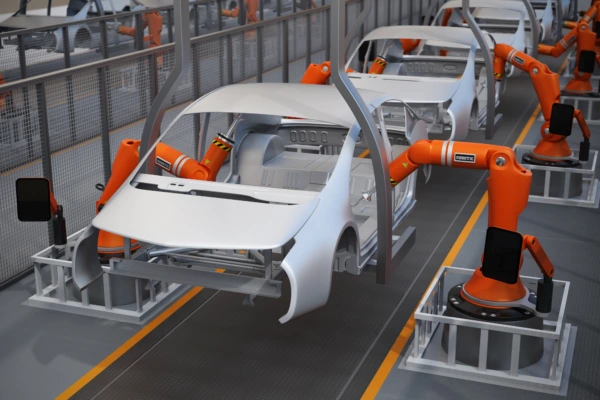
Tech updates
Changing the Face of Robotic Automation
Realtime Robotics’ motion planning technology enables robots to make intelligent decisions, and it’s transforming how robots work together. Robots are now able to work together safely and productively. So what does this look like in a manufacturing setting such as chassis welding?
Developing multi-robot welding applications has traditionally been a very time intensive endeavor. Welds must follow a set sequence, and minimizing cycle time is critical. Implementing a spot welding cell with upwards of 10 robots has traditionally taken weeks of programming and simulation, and months of on-site testing and tuning. With our RapidPlan solution, the implementation is significantly quicker and delivers a highly efficient, coordinated cell slashing the need for extensive testing and programming. Our technology also introduces advanced flexibility, allowing robots to pick up another robot’s work in the event that it malfunctions.
Conventional
- Robots operating “blindly”
- 100’s of hours for initial programming
- 1000’s of hours for deployment, test and evaluation
- Inefficient cell operation due to programming complexity
- If one robot goes down, then the entire cell is down for hours
Using Realtime Robotics
- Up to 10x reduction in initial programming and development time
- Optimized cell operation
- Guaranteed collision-free operation
- No need for PLC interlocks
- Immediate adjustment for robot failures
By integrating Realtime Robotics RapidPlan organizations can finally realize the long-promised productivity gains from robots working together in harmony. If you would like to find out more about how our motion planning technology is transforming the way industrial robots work together, then take a minute and complete the form reach below.